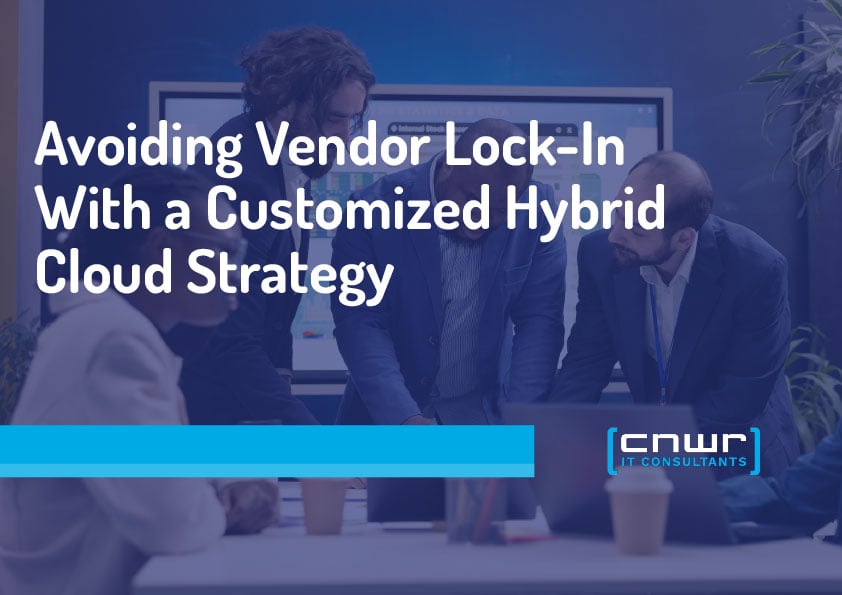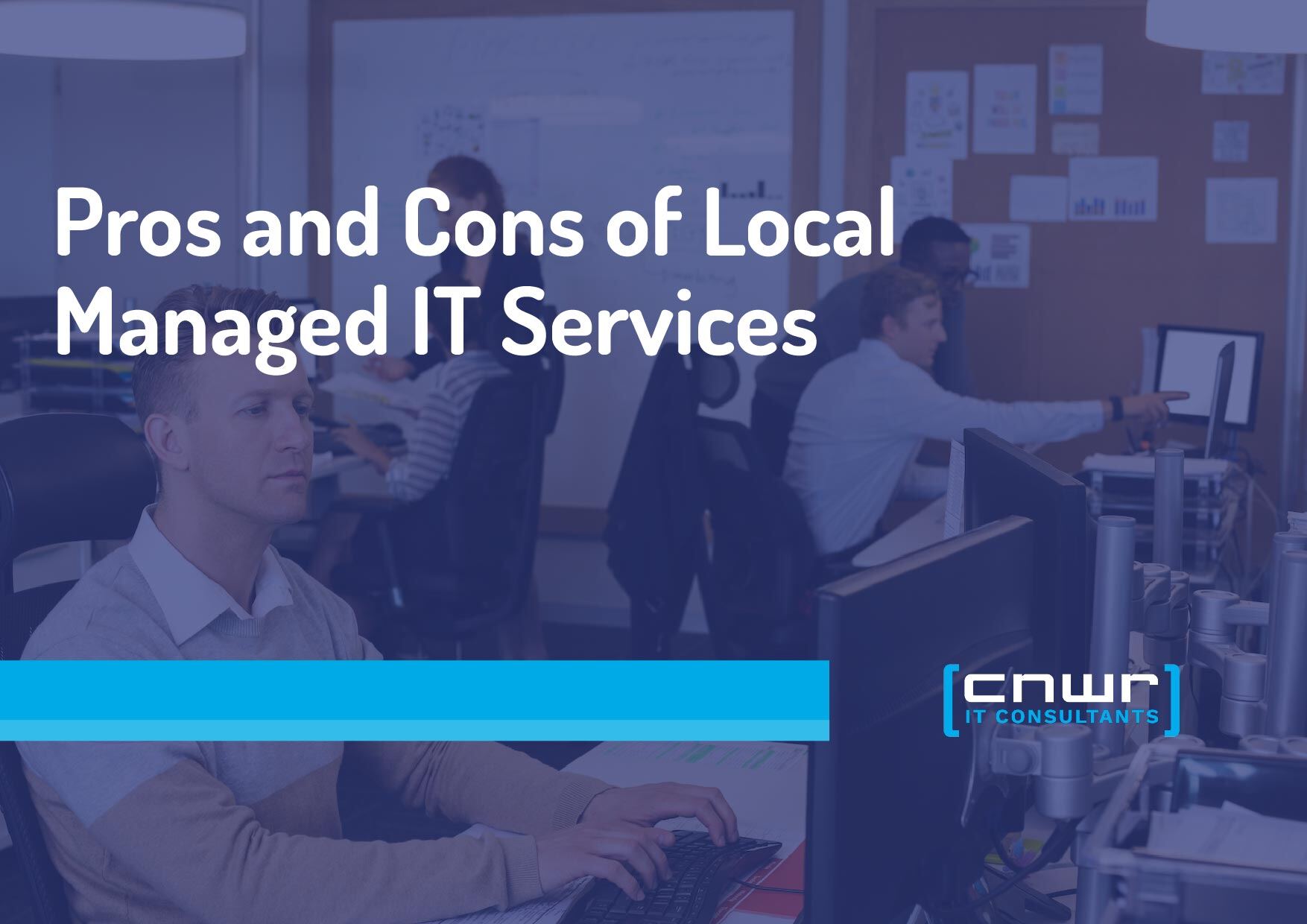At the rate technology is progressing, the ability to capitalize on the latest tech early on can mean the difference between leaping ahead and falling behind your competition. Now, as easy as that sounds, if you're locked in with a single vendor, making the switch can be an operational and compliance nightmare, and expensive.
According to a poll conducted by Gartner, only 1% of respondents said that they are in a position to switch vendors easily.
So, how do you retain your ability to stay technologically agile without the dependency on a single vendor and the risk of disrupting your operations? The answer is customized hybrid cloud IT services; a combination of on-premise infrastructure with cloud resources tailored to your operations.
Table of Contents
|
What is Vendor Lock-In and Why Should You Avoid It?
Vendor lock-in is the scenario where your IT infrastructure becomes so tied to one provider’s tools or services that switching to another becomes a risky, complex, and expensive affair.
In short, your operations are forced to work within the confines of their technological ecosystem, irrespective of what your business needs actually are.
This situation typically arises in the following scenarios:
- The technology is proprietary
- The terms and conditions of the existing vendor are restrictive
- The tools or services lack portability or do not integrate with other platforms
Now, when you're locked in with a vendor, you may face these real-world scenarios:
- Vendors know you're dependent on their systems, and you're no longer negotiating from a position of strength. This means they can name their price for their services and be right on their terms of service
- Then there are the compliance risks. If you are in an industry that is heavily regulated, and if the vendor doesn't keep pace with regulatory updates, your organization is left exposed to face the consequences
- Finally, if you do plan to switch vendors, you will face unplanned downtimes and operational delays. Transitioning your operations to a new platform and making sure that the new integrations are working as they should will take multiple iterations to get right
Why are Customized Hybrid Cloud IT Services the Right Way to Go?
The most practical way to avoid putting your organization in this situation is to design your IT infrastructure to be technologically flexible from the ground up. You can achieve this with customized hybrid IT cloud services, which combine on-premise IT infrastructure with private or public cloud environments or services.
The approach flips the script, putting you in a position to build your IT infrastructure the way your business needs it, rather than adapting it to run in a specific vendor ecosystem. The benefits of doing so are many:
- You control the systems: You decide what stays on-premises and what moves to the cloud
- You stay compliant: You control what data is stored in-house while using the cloud for less restricted operations
- You can scale on demand: Cloud services can scale on demand without requiring an overhaul of your on-premise setup
Why is customization the key?
Customization gives you the freedom to build an IT environment using technologies that are vendor-neutral by design. Let's look at a few examples:
- Open standards: When you use open protocols and APIs your systems can (by default or with minimal tweaks) communicate with a broader ecosystem of tools and platforms
- Containerization: Containerization makes applications easily deployable across different environments without the need to rewrite their source code
- Multi-cloud setups: Custom configurations over multiple cloud setups spread your operational risk and keep the doors open to migrate your services with minimal technical hurdles
In the real world, this translates like so:
- A manufacturer can run containerized production software on their local network to improve performance, while also utilizing an on-cloud service for analytics or forecasting
- A veterinary clinic can store patient health data in-house to meet HIPAA requirements. Meanwhile, functions like managing appointments or billing are taken care of by software built using open APIs. Thus giving them the option to switch service providers if required
How to Avoid Vendor Lock-In?
Building a flexible IT step is not complex if you factor the following into your IT design strategy.
- Design modular systems: Break your infrastructure into smaller, independent components. This way, if you ever need to make a change, you can do so without needing to overhaul your entire IT infrastructure
- Stick to cloud-agnostic development practices: Stay away from tools or services that only one vendor has a monopoly on. As mentioned earlier, spread your infrastructure across multiple environments to spread your risk
- Always maintain a zero-trust stance with data: Always make sure that every aspect of control over your data, be it storage, access control, or identity management, is performed by your systems (unless you lack the in-house expertise to do so)
- Extend the vendor-neutral policy to backup and monitoring too: Make sure all your data backup solutions and monitoring tools are vendor-neutral and can integrate well with your entire tech stack
What to Look for in a Hybrid IT Services Partner?
If you have decided that a customized hybrid cloud strategy is for you, the next obvious step is to look for a service provider. The key, however, is finding the right one, and here is how you should approach the decision:
- Get clarity on their vendor-neutral stance: The right customized hybrid cloud service partner should be ready to work around your needs. If you feel that you are being pushed toward a certain platform, it may be a red flag
- Understand their capabilities: Have detailed discussions on whether they are willing and have the expertise to tailor their solutions to fit your exact needs. Stay away from those attempting to sell you on one-size-fits-all packages
- Assess them on their transparency: Are they willing to provide a clear service agreement? Do you get real-time visibility into the process and into system performance?
- Discuss ongoing support: A good service partner will provide you with continual ongoing support. Make sure to clarify that it is easy to access real human support, and that you don't have to jump through hoops with a chatbot to get there
- Experience with cloud and on-premise systems: The entire premise of this model depends on a combination of on-premise and cloud systems. Make sure the service provider has the expertise to manage both ends of the setup confidently
Summing It Up
Vendor lock-in doesn't happen overnight. It starts with one proprietary tool, one limited integration, and one restrictive contract at a time. By the time you notice it shifting away, it can feel like more trouble than it’s worth.
The key to avoiding this is to adopt a customized hybrid IT cloud strategy while making sure that you make the decisions, not the other way around.
Talk to a Specialist at CNWR today for an unbiased chat on the options available to you.




